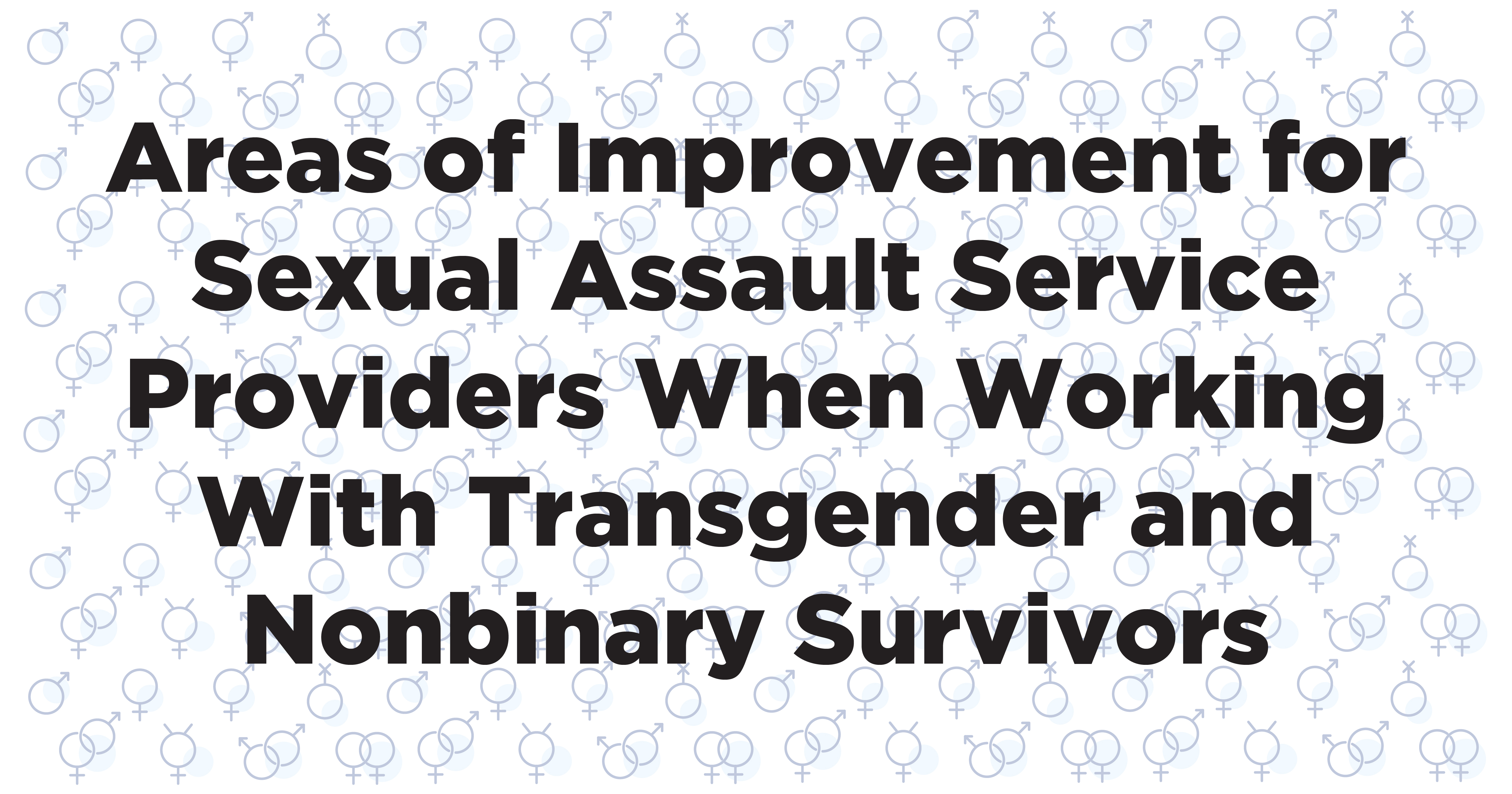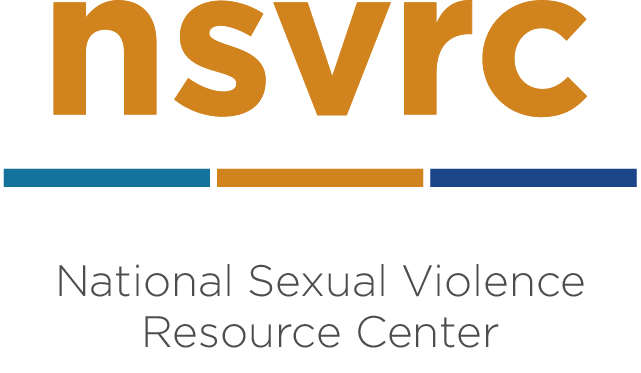
People self-reporting as transgender and nonbinary make up an increasing percentage of the population, from all ages, races, ethnicities, religions, and socio-economic backgrounds. Trans/nonbinary communities are diverse, with wide-ranging experiences and needs. To meet the needs of transgender communities, sexual assault service providers must learn about how race, immigration status, classism, gender, and more impact those communities. When sexual assault service providers are learning about transgender communities, it is imperative to learn about how race, immigration, class, disability, gender, and more impact the communities that they will be working with.
While large-scale research on transgender people is limited, the US Trans Survey (USTS) is the largest study of Transgender experiences in the United States. It covers a wide range of subjects, including victimization and harm (2015 and 2022). To learn more about the range of experiences of trans people, check out the reports from the studies. This study, along with research from the Williams Institute, The Trevor Project, and FORGE, all show that trans/nonbinary people experience higher rates of sexual violence than cisgender people (those who identify with the gender they were assigned at birth). Further, trans people report many barriers to accessing supportive services after violence.
Everyone has the right to compassion, trauma-informed services, and the healing support that they need and want after sexual assault. These services should be culturally relevant and grounded in the strengths and needs of the survivor and their communities. Sexual assault service providers are an important component in creating healing and safety after violence for trans/nonbinary survivors. To do this, sexual assault organizations can assess their direct services, organizational strategies, and outreach methods to improve the care they provide for trans survivors.
For advocates and those doing prevention work to be effective, it is crucial they have the support of their agencies. Organizations can lead in promoting trans-affirming services through their policies and practices. Start with an organizational assessment. Check out this tool from FORGE.
In addition to an assessment, organizations can:
- Provide accessible services. Trans/nonbinary people have higher rates of disabilities. Ensure that services are accessible for people with various disabilities.
- Offer gender-inclusive spaces. Gender-integrated services (services that welcome people of all genders) are a great way to create inclusion for trans/nonbinary people. Creating spaces for people of all genders to receive healing services will not only create more opportunities for trans/nonbinary survivors but also for cisgender men who often struggle to access sexual assault services. These can include support groups, shelters, and one-on-one advocacy. Many cisgender and transgender people find healing in gender-integrated spaces. Learn more about shifting towards gender-integrated support groups. Check out these links for more information on providing shelter options.
- Support trans/nonbinary staff. Trans/nonbinary survivors will pay attention to how transgender staff and volunteers are treated. Be sure that staff are called by their affirmed name and pronouns, non-discrimination policies are inclusive of gender identity, and that bias is addressed when it occurs.
- Conduct training for all staff. When accessing services, survivors often interact with multiple people, not just advocates. Make sure everyone on the team understands how to provide trans-affirming care.
- Train and work with the community. Many trans/nonbinary survivors reach out to friends, family, or other trusted people instead of or before reaching out to sexual assault agencies. By working with the trans community (and their supporters), you can help expand the support available to trans survivors.
- Assess referrals and resources. Whenever possible, referrals should be made to agencies that provide trans-inclusive services. At a minimum, provide information about the requirements of the agencies that you provide referrals to. Are they gender-segregated? Do they require ID or insurance? Do they have experience working with survivors? What about experience with transgender communities? This can help survivors make informed decisions about what resources to access. If the current set of resources does not include many places that are accessible to transgender people, work on updating the list.
Move at the speed of trust.
Mainstream sexual assault organizations – those that were not developed in deep relationship with trans communities – often have to do a lot of work to demonstrate that they are trustworthy. Trans people have been hurt by many service providers and have a long history of being excluded from anti-violence services. Sexual assault agencies can commit to long-term work to heal these rifts and support trans survivors.
Part of this practice will include building relationships with trans or LGBTQ organizations that exist in the area. Listen and learn from them. Share resources and collaborate. Moving at the speed of trust means making an effort to demonstrate trustworthiness, being open to feedback, and recognizing that change can take time.
Advocacy services
Most people who work with survivors routinely ask all of their clients for their name and pronoun(s). If this practice is new to you, review how to ask and use survivors’ affirmed name and pronouns. This demonstrates to trans/nonbinary survivors that their identities will be respected at your agency. However, trans-affirming advocacy goes far beyond pronouns. Direct service advocates can also:
- Understand the needs of trans/nonbinary survivors. This means listening to survivors about their needs, without making assumptions. For many trans/nonbinary survivors, needs like financial assistance, housing, or accessing healing services may be their top priorities. For other trans/nonbinary survivors, being able to affirm their gender through clothes or grooming, being able to protect their privacy around their gender, or being able to live their lives openly as transgender may be at the forefront of their minds.
- Affirm each survivor’s gender. This may be as simple as using their correct name and pronouns. It may also include making sure they have access to clothing or grooming supplies that meet their needs. Avoid assumptions about a person’s gender based on appearance, and make sure that everyone has access to choices in supplies, spaces, and services.
- Learn about the unique forms of violence that trans/nonbinary survivors may experience. Trans people often experience multiple forms of violence across the lifespan and may need support related to stalking, hate violence, or harassment in addition to the sexual violence they experienced. Check out these resources from FORGE to learn more:
o Supporting LGBTQ+ Stalking Victims (co-created with SPARC)
o The impact of hate violence on sexual assault and domestic violence advocacy
o Trans-specific power and control tactics
- Safety plan. Work with survivors to develop safety plans that work for them. With trans/nonbinary survivors, this plan may include details related to continuing access to gender-affirming services or healthcare, safety from hate violence, and navigating anti-trans sentiments in daily life or with other agencies. Here is one safety planning tool.
Trans-affirming and trauma-informed
Many of the ways that sexual assault organizations are trauma-informed and empowerment-based will help support trans survivors. By listening to and believing trans/nonbinary survivors about their experiences – of violence, of their gender, and of what they will find helpful – advocates can provide many critical support services. Trans/nonbinary people are part of all of our communities and should have access to equitable services after violence.
This blog post was published in The Resource 2025 online magazine special issue on Sexual Violence and Sexual Health Outside the Gender Binary.
About the Author:
Emil Rudicell is the Program Manager at FORGE, a national transgender led anti-violence organization. At FORGE, they conduct trainings and coordinate programs for community members and service providers to improve support for trans/nonbinary survivors of violence.
